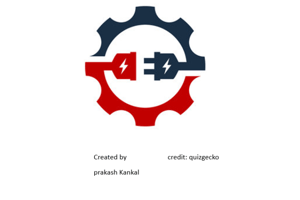Podcast
Questions and Answers
What is the unique characteristic of Zener diodes that sets them apart from other diodes?
What is the unique characteristic of Zener diodes that sets them apart from other diodes?
- Exponential I-V curves
- Forward bias mode behavior
- Conventional diode behavior
- Reverse breakdown properties (correct)
How do Zener diodes regulate power in circuits?
How do Zener diodes regulate power in circuits?
- By decreasing output levels
- By limiting voltage fluctuations (correct)
- By accelerating current flow
- By increasing voltage fluctuations
What type of I-V curve do Zener diodes exhibit during reverse breakdown?
What type of I-V curve do Zener diodes exhibit during reverse breakdown?
- Linear (correct)
- Logarithmic
- Exponential
- Parabolic
Which parameter defines a Zener diode's performance related to its breakdown phenomenon?
Which parameter defines a Zener diode's performance related to its breakdown phenomenon?
What does a lower zener breakdown voltage (VBZ) indicate about a Zener diode?
What does a lower zener breakdown voltage (VBZ) indicate about a Zener diode?
In what mode does a Zener diode behave like a conventional diode?
In what mode does a Zener diode behave like a conventional diode?
What is the initial breakdown voltage (IBV) in relation to the zener breakdown voltage?
What is the initial breakdown voltage (IBV) in relation to the zener breakdown voltage?
How can Zener diodes be used as stable voltage regulators?
How can Zener diodes be used as stable voltage regulators?
What happens when a circuit encounters an input voltage exceeding the sum of individual Zener diode breakdown voltages?
What happens when a circuit encounters an input voltage exceeding the sum of individual Zener diode breakdown voltages?
How does connecting Zener diodes in series affect the combined breakdown voltage?
How does connecting Zener diodes in series affect the combined breakdown voltage?
What enables engineers to effectively utilize Zener diodes in electronic designs?
What enables engineers to effectively utilize Zener diodes in electronic designs?
Why do manufacturers specify both nominal zener breakdown voltage and initial breakdown voltage (IBV)?
Why do manufacturers specify both nominal zener breakdown voltage and initial breakdown voltage (IBV)?
Flashcards are hidden until you start studying
Study Notes
Understanding Zener Diodes
Zener diodes, often referred to as breakdown diodes, are a specific type of semiconductor device known for their ability to conduct current when biased above a threshold voltage called the zener voltage. They differ from other types of diodes due to this unique characteristic, making them particularly useful in various electronic applications.
Characteristics of Zener Diodes
A Zener diode behaves like a conventional diode in forward bias mode, allowing current flow, but also has reverse breakdown properties where it generates significant current when subjected to voltages higher than its zener voltage. This feature allows circuits to regulate power by limiting voltage fluctuations while maintaining a constant output level.
Unlike typical PN junction diodes that have exponential I–V curves characterizing their behavior, Zener diodes exhibit linear characteristics during reverse breakdown. In other words, the increase in reverse applied voltage leads to a proportional rise in reverse current.
Zener Breakdown Voltage
The critical parameter defining a Zener diode's performance is the zener breakdown voltage (VBZ), which refers to the minimum voltage required to trigger the reverse breakdown phenomenon. As the name suggests, a lower VBZ indicates a diode capable of withstanding smaller voltage variations before entering the breakdown state.
In addition to the nominal zener breakdown voltage, there exists an initial breakdown voltage (IBV) that may be slightly higher. Manufacturers specify both values, providing engineers with options based on application requirements.
Regulation Using Zener Diodes
One essential advantage of utilizing Zener diodes lies in their capability to serve as stable voltage regulators within electrical systems. By connecting several series-connected Zener diodes in parallel across a varying input voltage, one can achieve a desired fixed output voltage through proper selection of diodes according to their specifications.
For example, consider a circuit containing two Zener diodes, each having different breakdown voltages (say 7 volts and 9 volts). Connecting these diodes in series will produce a combined breakdown voltage equivalent to the sum of individual diode breakdown voltages (namely 16 volts). However, once the system encounters an input voltage equal to or exceeding their sum, the circuit employs only the lowest breakdown voltage diode (in our case, 7 volts) to maintain stability in response to fluctuating inputs.
Overall, understanding the basics of Zener diodes enables engineers to utilize them effectively in electronic designs requiring precise voltage control. Knowledge of their key characteristics, such as zener breakdown voltage and regulation capabilities, empowers engineers to select appropriate devices and create reliable circuits for a wide range of applications.
Studying That Suits You
Use AI to generate personalized quizzes and flashcards to suit your learning preferences.




